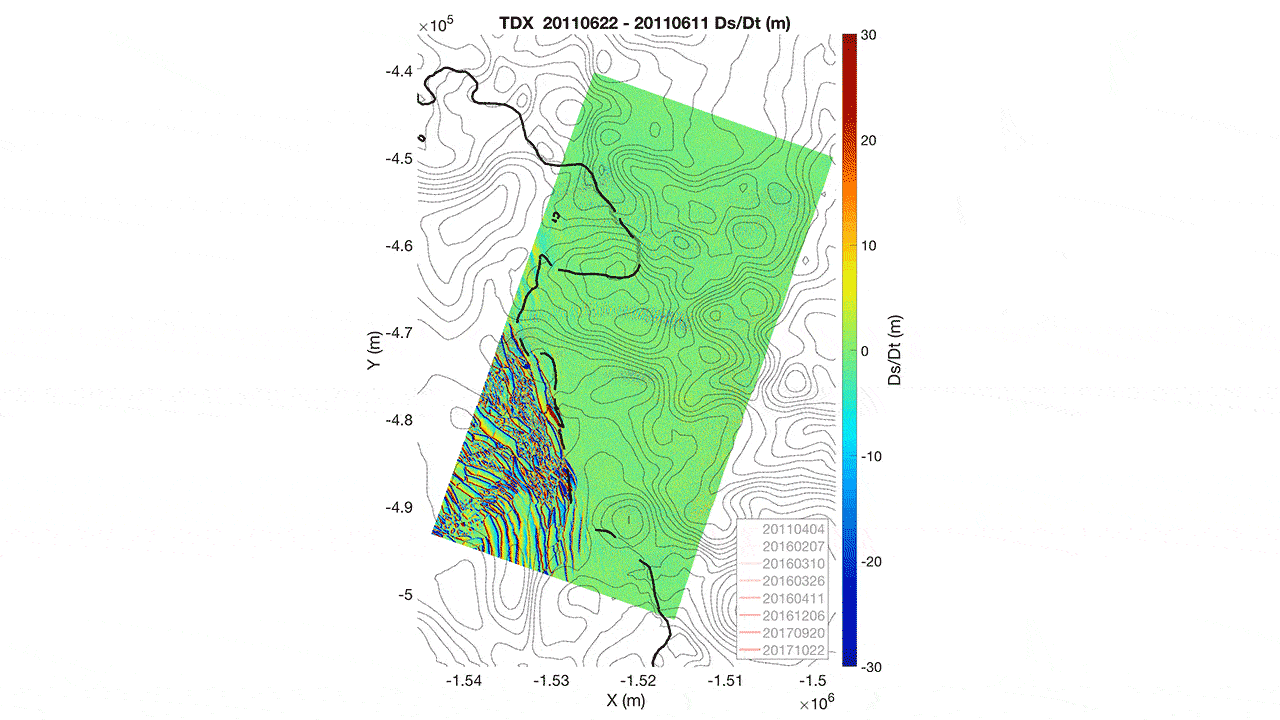Giant Void Hidden Under Antarctica’s Ice Threatens Vast Glacier

There's a giant void hiding under the Antarctic ice, and it's growing larger and more menacing by the day, a new study using satellite data finds.
The cavity is colossal, about two-thirds the area of Manhattan and nearly 1,000 feet (300 meters) tall. It's growing at the bottom of Thwaites Glacier in West Antarctica, and it's rapidly enabling ice melt above it.
Scientists thought there might be some gaps between Thwaites Glacier and the bedrock below it, where ocean water could flow in and melt the icy glacier above it. But even they found the immensity and speed of the void's growth surprising. [Top 10 Ways to Destroy Earth]
For starters, the void is large enough to have once held 15 billion tons (13.6 billion metric tons) of ice, but much of that ice has melted during the past three years, according to NASA.
"We have suspected for years that Thwaites was not tightly attached to the bedrock beneath it," study co-researcher Eric Rignot, a professor of Earth system science at the University of California, Irvine, and a principal scientist for the Radar Science and Engineering Section at NASA's Jet Propulsion Laboratory in Pasadena, California, said in a statement.
Scientists spotted the concealed void thanks to a new generation of satellites, Rignot noted. These satellites, which are part of NASA's Operation IceBridge, have ice-penetrating radar. The researchers also used data from a constellation of Italian and German spacecraft that are equipped with an SAR (synthetic-aperture radar) instrument that can measure how ground surface has shifted between images.
These tools revealed that the ground had shifted substantially from 1992 to 2017, the scientists found.
Sign up for the Live Science daily newsletter now
Get the world’s most fascinating discoveries delivered straight to your inbox.
"[The size of] a cavity under a glacier plays an important role in melting," study lead researcher Pietro Milillo, a scientist at the Radar Science and Engineering Section at JPL, said in the statement. "As more heat and water get under the glacier, it melts faster."

Thwaites Glacier is about the size of Florida and currently responsible for roughly 4 percent of global sea rise. If the entire glacier melted, the resulting water could raise world ocean levels by more than 2 feet (65 centimeters), the researchers said. Moreover, the glacier acts as a backstop for neighboring glaciers, meaning that it slows the rate at which they lose ice. If those glaciers melted, too, sea levels could increase a whopping 8 feet (2.4 meters), the research team said.
Although Thwaites Glacier is one of the hardest places on Earth to reach, more of its secrets will soon be revealed. This summer, the U.S. National Science Foundation and the British Natural Environmental Research Council are launching the International Thwaites Glacier Collaboration, a five-year field project that aims to get to the bottom of the glacier's processes and features.
Uneven retreat
Thwaites Glacier, curiously, isn't melting in a uniform way.
"We are discovering different mechanisms of retreat," Milillo said. For instance, the 100-mile-long (160 kilometers) glacier front has different rates of retreat in its grounding line (where the sea ice meets the ocean's bedrock) depending on where you look. [In Images: IceBridge Investigates Antarctica]
The satellites revealed that the enormous void is hiding under the glacier's western side, the one farther away from the West Antarctic Peninsula, the researchers said. In essence, this means that the glacier at this spot is exposed to the ebb and flow of the tide, which causes the ice at the grounding line to retreat and advance across a region that's about 2 to 3 miles (3 to 5 km) long.
However, there's been more retreat than advancement as of late. The glacier has retreated at a steady rate of about 0.4 to 0.5 miles (0.6 to 0.8 km) annually since 1992, the researchers found. This has made the melt rate on this part of the glacier unsettlingly high, the researchers said.
Meanwhile, "on the eastern side of the glacier, the grounding-line retreat proceeds through small channels, maybe a kilometer [0.6 miles] wide, like fingers reaching beneath the glacier to melt it from below," Milillo said. Here, the retreat rate of the ground line has doubled from about 0.4 miles (0.6 km) annually from 1992 to 2011 to 0.8 miles (1.2 km) a year from 2011 to 2017, he said.
Despite this high rate of retreat, melt rates are still higher on the western side, where the void is located.
These findings show the complexity of ice-ocean interactions. Hopefully, the upcoming international collaboration will help researchers piece together the different systems at work under and around the glacier, the researchers said.
"Understanding the details of how the ocean melts away this glacier is essential to project[ing] its impact on sea level rise in the coming decades," Rignot said.
The study was published online yesterday (Jan. 30) in the journal Science Advances.
- Images of Melt: Earth's Vanishing Ice
- The Reality of Climate Change: 10 Myths Busted
- Photos of Melt: Glaciers Before and After
Originally published on Live Science.

Laura is the archaeology and Life's Little Mysteries editor at Live Science. She also reports on general science, including paleontology. Her work has appeared in The New York Times, Scholastic, Popular Science and Spectrum, a site on autism research. She has won multiple awards from the Society of Professional Journalists and the Washington Newspaper Publishers Association for her reporting at a weekly newspaper near Seattle. Laura holds a bachelor's degree in English literature and psychology from Washington University in St. Louis and a master's degree in science writing from NYU.









